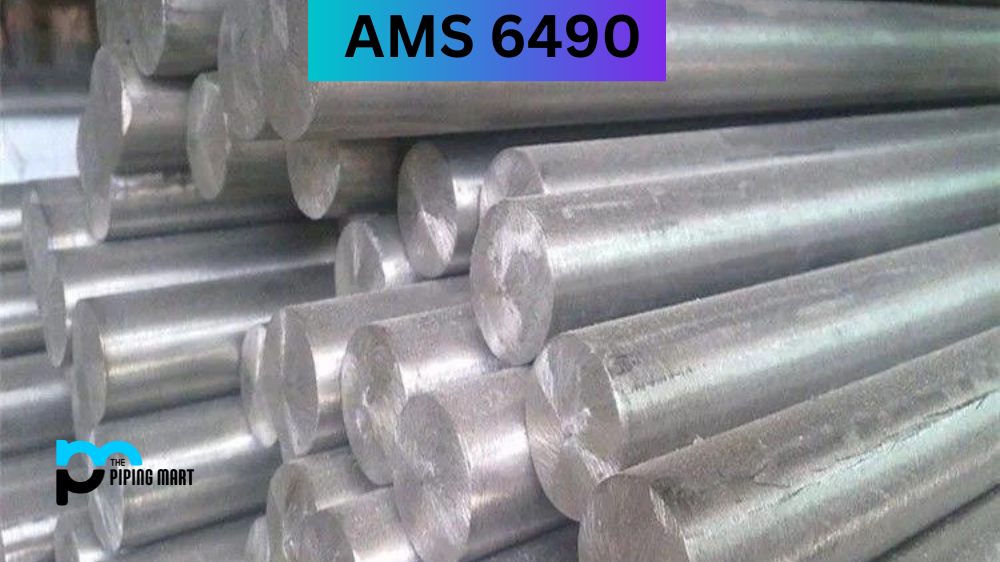Metals play a critical role in many engineering applications, especially those that require high strength and heat resistance. One such material is AMS 2303, a high-strength alloy that can withstand extreme temperatures and challenging environments. This blog post will discuss AMS 2303’s composition, physical and mechanical properties, uses, hardness, and heat treatment techniques for improving its performance.
What is AMS 2303?
AMS 2303 metal is a type of steel alloy that has earned a solid reputation within the aerospace industry for its exceptional corrosion-resistant properties. The alloy is designed to withstand exposure to harsh environmental factors such as moisture, salt, and high temperatures. The high-strength material is ideal for various applications, including engine components, landing gear, and structural assemblies. AMS2303 metal is a testament to the innovative strides made by engineers and metallurgists in developing materials that can push the limits of what we thought was possible. Its use has elevated the safety and efficiency of aerospace technologies and cemented AMS 2303’s place in the industry as an indispensable material.
AMS 2303 Composition
AMS 2303 steel is a nickel-chromium alloy with high strength and excellent resistance to heat and oxidation. It is commonly used in the aerospace, defence, automotive, and power generation industries. The composition of AMS 2303 includes 30-35% nickel, 16-18% chromium, 2-3% molybdenum, 1.5-3% titanium, 0.5-1.5% aluminium, and other trace elements. This combination of elements imparts AMS 2303 with superior strength, ductility, and corrosion resistance, even at high temperatures.
AMS 2303 Physical Properties
The physical properties of AMS 2303 include a density of 8.22 g/cm³, a melting point of 1350°C, and a specific heat capacity of 432 J/kg·K. Its electrical resistivity is 1.12 μΩ·m, and its thermal expansion coefficient is 13.4 μm/m·K at 20-800°C. Furthermore, AMS 2303 has excellent fatigue resistance, a high creep rupture strength, and is resistant to thermal shock and thermal fatigue.
AMS 2303 Mechanical properties
Mechanical properties are equally impressive. At room temperature, AMS 2303 can yield up to 1015 MPa and a tensile strength of 1100 MPa, depending on the heat treatment used. Its elongation at break is around 25%, while its modulus of elasticity is 210 GPa. AMS 2303 also has excellent resistance to stress corrosion cracking and is often used in applications where high mechanical loads must be sustained.
AMS 2303 Uses
Due to its unique combination of strength, heat, and corrosion resistance, AMS 2303 is often used in applications requiring these properties. For example, it is used in jet engines, gas turbines, and heat exchangers for the aerospace industry. It is also used in the chemical processing, nuclear, and petrochemical industries to manufacture valves, pumps, and piping. AMS 2303 is also used in automotive and marine applications where high mechanical loads and corrosion resistance are essential.
AMS 2303 Hardness
The hardness of AMS 2303 can be improved through heat treatment techniques. Typically, AMS 2303 is solutionized at 980-1065°C, followed by rapid cooling in water or oil. This process improves its machinability and ductility. Subsequently, it is aged at 650-760°C for 8-24 hours to obtain the desired mechanical properties. Precipitation hardening using aluminium, titanium, and molybdenum can also be used to increase the hardness of AMS 2303.
AMS 2303 Heat Treatment
Heat treatment is an essential process for enhancing the properties of metal alloys, and AMS 2303 is no exception. This alloy is highly versatile and widely used in industries that demand high strength and corrosion resistance, such as aerospace and defence. The heat treatment process for AMS 2303 involves heating the alloy to a specific temperature and holding it there for a specified period, followed by quenching in water or oil to rapidly cool the alloy. This process increases the alloy’s strength and toughness, making it ideal for applications in harsh environments. With the proper heat treatment, the properties of AMS 2303 can be optimized for maximum performance and durability.
Conclusion:
In conclusion, AMS 2303 material is an exceptional alloy with fantastic physical and mechanical properties. Its unique strength, flexibility, and corrosion resistance make it ideal for high-temperature and high-stress applications. The aerospace, defence, automotive, and power generation industries use this alloy to improve manufacturing processes and products. Heat treatment techniques can improve its hardness, allowing it to withstand even more challenging environments. AMS 2303 is a testament to the crucial role that metals play in engineering and is an essential material that will continue to be used for many years.

A passionate metal industry expert and blogger. With over 5 years of experience in the field, Palak brings a wealth of knowledge and insight to her writing. Whether discussing the latest trends in the metal industry or sharing tips, she is dedicated to helping others succeed in the metal industry.




